Avengers: Endgame Visual Effects Supervisor on Happy Hulk, Lebowski Thor & More
Spoiler alert for those of you who still haven’t seen Avengers: Endgame.
The Marvel universe’s supersized super-villain Thanos (Josh Brolin, plus CG) last year dealt a heavy hand to overpopulation in Avengers: Infinity War, wiping out half of humanity with a snap of his fingers warmed by his Infinity Stone encrusted gauntlet. Five years onward the Avengers are looking stuck, with those remaining still in mourning and low on solutions. Their situation appears irreversible until Scott Lang/Ant-Man (Paul Rudd) re-emerges from the quantum realm, where he’s inadvertently ridden out Thanos’s apocalypse after Hope van Dyne (Evangeline Lilly), who was supposed to call him back to Earth’s ordinary time parameters, was among those turned to dust.
Ant-Man’s odd circumstances hold the key to undoing the destruction, and over three-plus hours laced with witty repartee, Anthony and Joe Russo’s opus plunges into time travel, consummated, as is the law in the superhero universe, by an epic showdown. Allegedly, Endgame draws to a close this universe’s eleven-year run, for which much of the crew has been on nearly as long as the talent (of whom Chris Evans, Robert Downey, Jr., and Chris Hemsworth have hinted in press conferences that they may indeed be moving along). While the actors sport more wrinkles, the effects team behind Avengers has gained a slew of new or improved tools to edit out said blemishes, or in the case of more creature-like characters, present them more realistically.
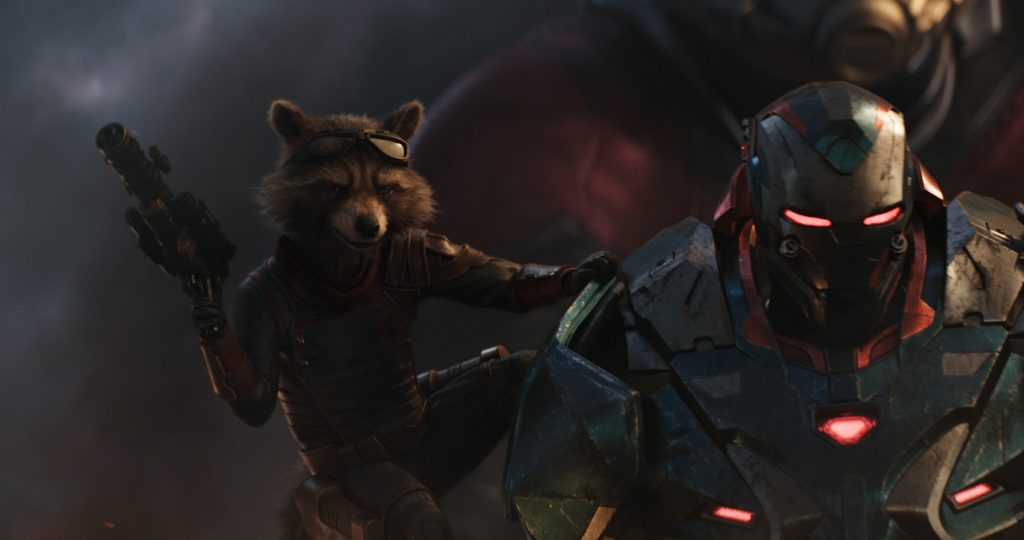
“Way back in the day, you were lucky to get the render out the other side and have it look good, but now you’re really able to give notes in terms of animation,” VFX supervisor Dan DeLeeuw says. (DeLeeuw also worked on Infinity War, both Captain America titles, and Iron Man 3.) With a character like Hulk (Mark Ruffalo) using the intervening five years to reconcile his inner Jekyll and Hyde and start wearing henley shirts, the advances have been crucial. “You’re capturing this incredible nuance, to the point that when we capture Mark Ruffalo as he’s eating lunch, based on the software, you’re able to recognize the movement of his face, and you’re able to have him speaking through eating with his mouth full,” says DeLeeuw. “It’s incredibly subtle stuff, but it adds to the realism of everything.”
A sense of realism was also key to the characters’ time travel exploits—to go into the past and collect Infinity Stones before Thanos does, they inevitably must meet themselves. “The nature of the tools has gotten to the point that they’re very artist-friendly, even when considering the complexity of what’s involved and the ability to tackle big ideas and many nuances,” DeLeeuw says. A VFX firm called Lola, for example, accomplished much of the de-aging process, where taking one to three years off an actor requires “basic techniques to change the shape of the actor’s face and get rid of whatever wrinkles may have appeared over the years,” DeLeeuw explains.
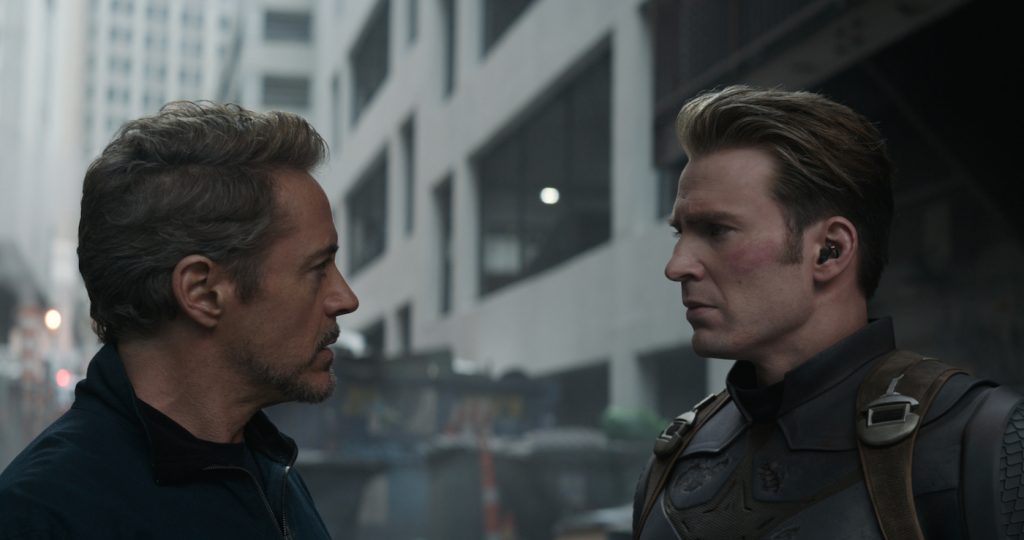
His team’s approach required more complexity, however, to bring Michael Douglas decades backward as Hank Pym, or Captain America/Steve Rogers (Chris Evans) decades forward into old age. In each case, skin doubles played the scenes after the principal actors, with VFX using scans for facial replacement along with an intense-sounding device nicknamed “the egg:” “Lola has a system with three cameras, in which they can dynamically light a very small area, something that’s six feet by six feet by ten feet tall, and you can capture even more reference. We use that for face replacement, as well,” explains DeLeeuw.
Elsewhere, seamless final scenes were a collaboration between visual effects and those on the ground. In terms of the real action, “we definitely work hand-in-hand with our stunt team. A lot of us have been together since Captain America: Winter Soldier, and both of our systems and ways of working together have evolved based on that close relationship,” says DeLeeuw. “When you look at the final battle, you have the big scenes with many people running and attacking, and we’ll augment the hero side with CG doubles.”
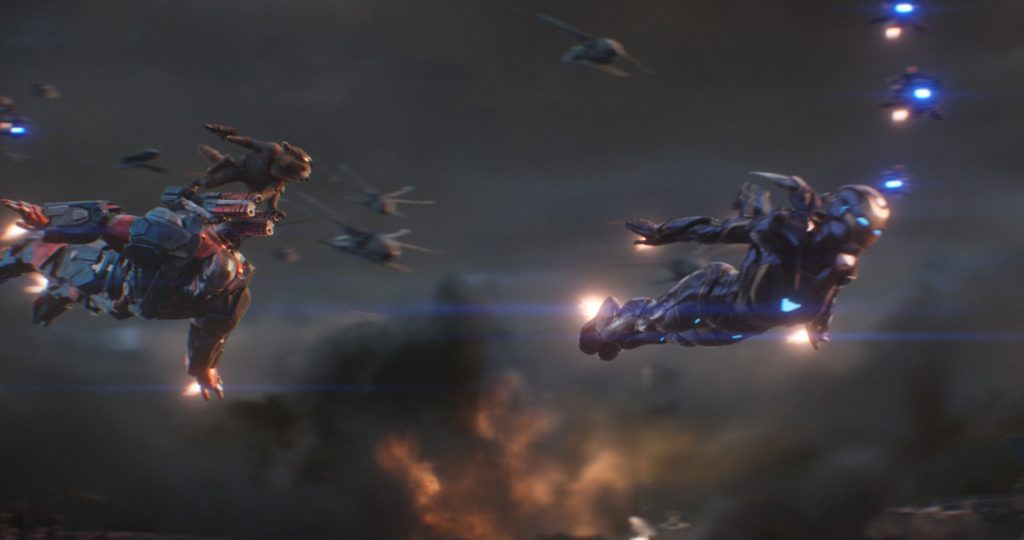
On the villain’s side, Josh Brolin as Thanos was a relatively lonely fighter, with only his three main henchmen represented by other actors. For the rest, stunt people were put into motion capture outfits and augmented, with a similar system used in the most clamorous moments of fighting. “When you get deeper into the battle, with massive scenes of armies running at each other, we’ll transition to that using live action stunt people with large scale digital armies,” says DeLeeuw.
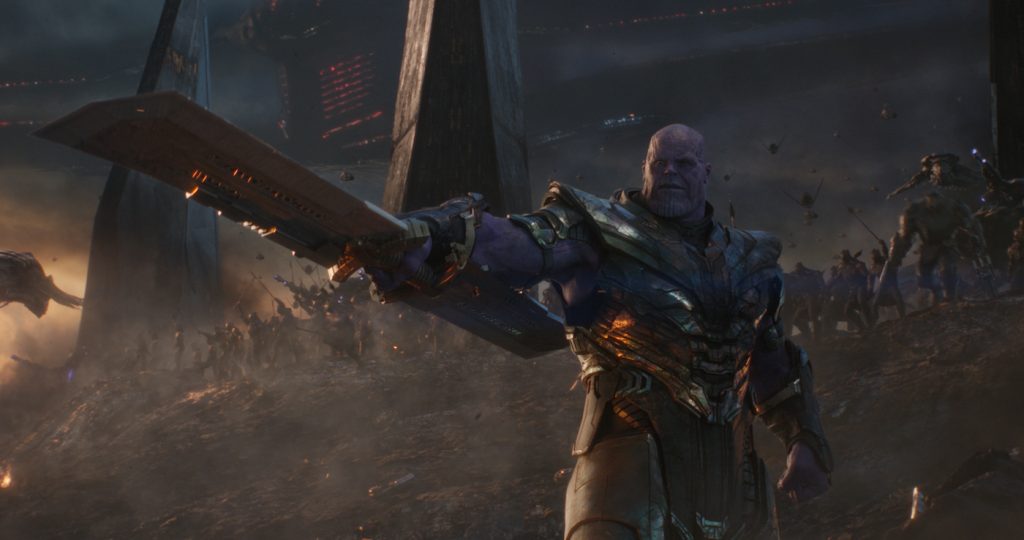
©Marvel Studios 2019
A similar effort went into creating the realistic nature of otherwise foreign landscapes. “I always try to anchor the realism of the shot in something that exists on Earth,” DeLeeuw says. “For Endgame, we have the crater at the end, after the Avengers compound has been blown up. We didn’t want it to just be a hole in the ground, so we actually found some volcanic craters that were fairly young and which we went and took photographic texture of. We’d provide that as a starting point for when we’d build our crater, which was completely CG in the movie, but was always tied to something real.”
It is, however, a seemingly unreal image that brings us to the most pressing question of all: Did transforming Chris Hemsworth into “Lebowski Thor” — as the Internet dubbed the dejected character’s new beer-swilling shape — require VFX, makeup, or the costume department?
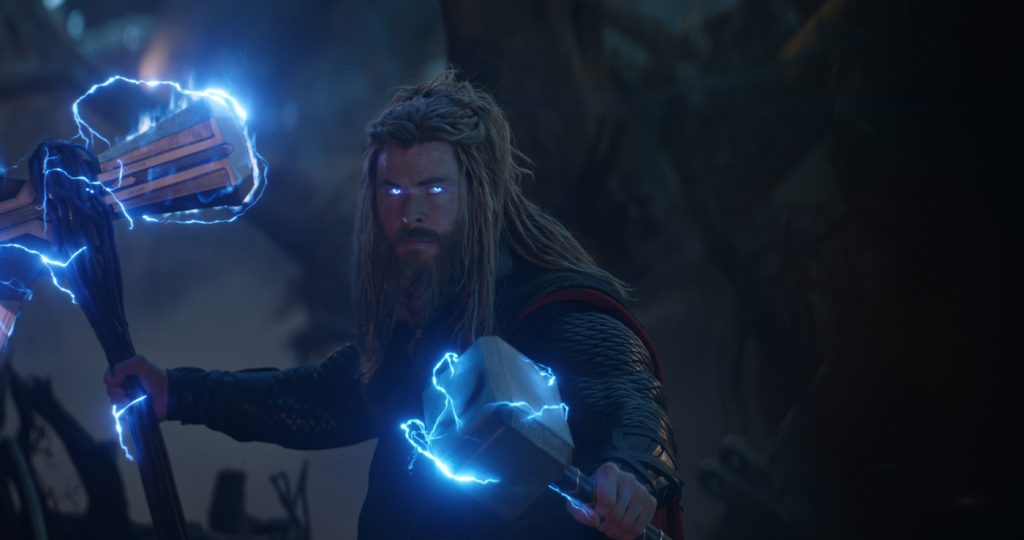
“All three, actually,” reveals DeLeeuw. “Folks said, hey let’s do it in CG,” but collaboration won the day for getting Hemsworth into believably ponderous form, with, for example, a heavy suit helping to change the actor’s gait. “If you look at before and afters, it looks great once it’s done. But if you look at before, when he turns around, there’s a big seam running down his back. So we painted that out,” notes DeLeeuw. At the end of the day, the Avengers walk through floating rings of fire, shoot through space and play out tender drama on believable foreign planets, but it turns out the visual effects team’s job is done when sad Thor convincingly appears to have embraced the other kind of six-pack.
Featured image: Marvel Studios’ AVENGERS: ENDGAME. Hulk (Mark Ruffalo). Photo: Film Frame. ©Marvel Studios 2019



